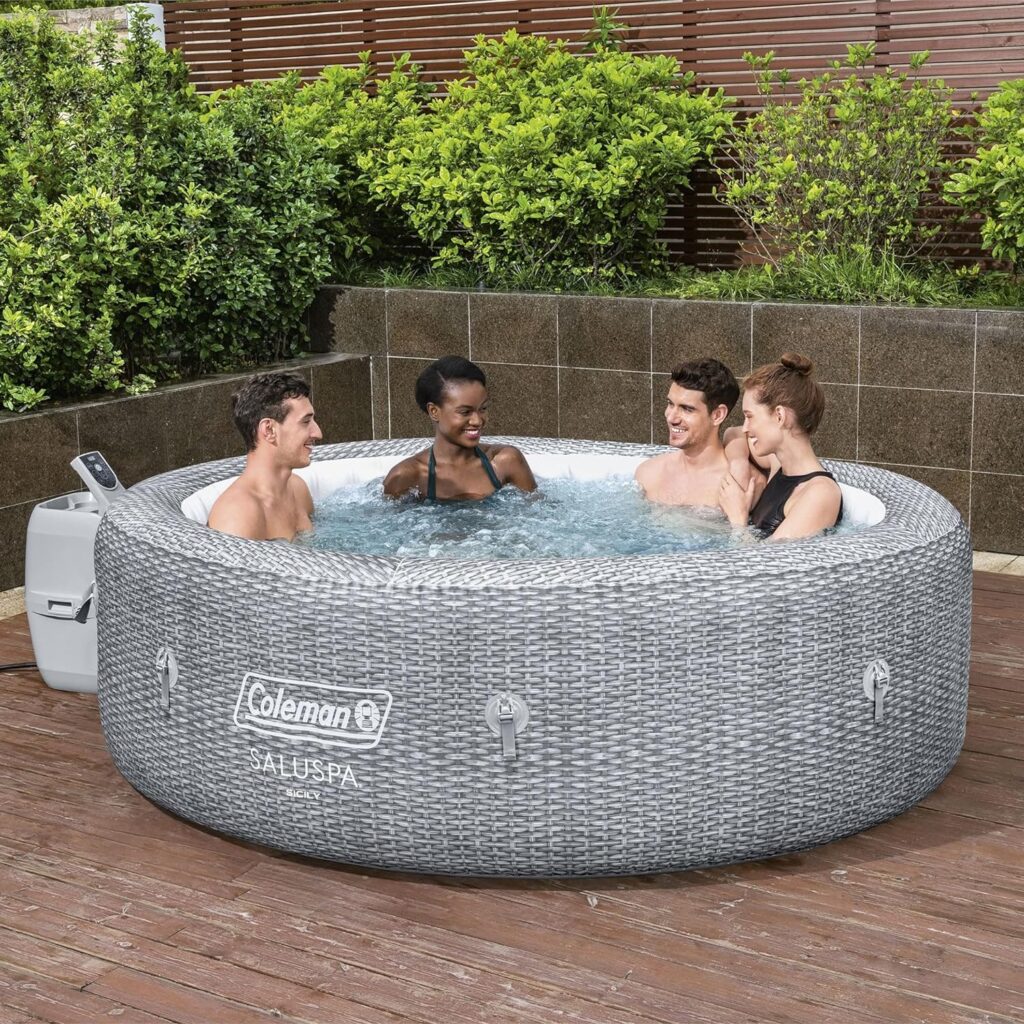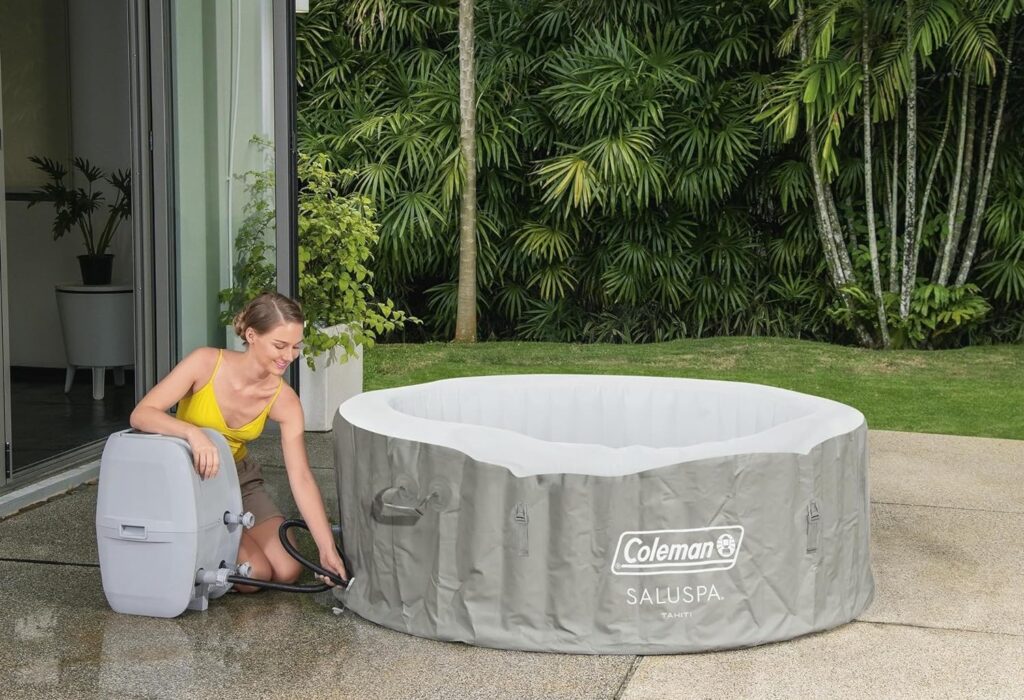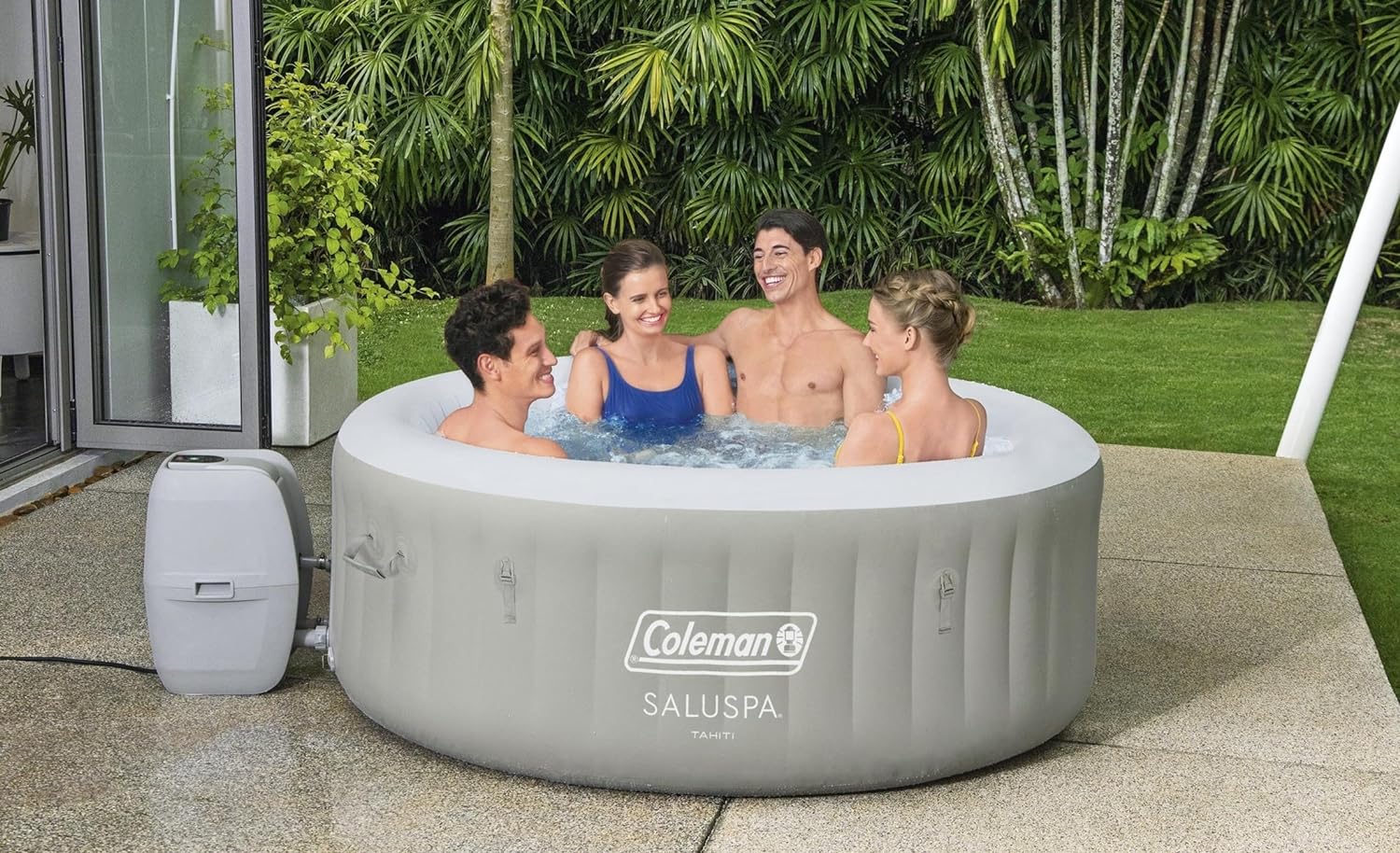Are Inflatable Hot Tubs Any Good; Soothing soaks in a steaming hot tub – pure bliss, right? But the hefty price tag of traditional hot tubs can leave that dream feeling out of reach. Enter the world of inflatable hot tubs, a more affordable and seemingly convenient alternative that’s been gaining traction in recent years. But before you take the plunge (literally!), it’s important to understand the pros and cons of inflatable hot tubs.
The Pros of Inflatable Hot Tubs
There’s no denying the initial appeal of inflatable hot tubs. Compared to their rigid counterparts, they boast several advantages:
- Affordability: The most obvious benefit is the significantly lower upfront cost. Traditional hot tubs can range from several thousand dollars to tens of thousands, while inflatable options typically start much lower, making them a more budget-friendly way to enjoy the hot tub experience.
- Easy Setup and Use: Forget about complex plumbing or electrical work. Inflatable hot tubs are a breeze to set up. Simply inflate the tub with a pump, fill it with water, and plug it in. Most models are ready to use within minutes, offering a near-instant path to relaxation.
- Portability: Unlike traditional hot tubs that are permanently installed, inflatable tubs offer unmatched portability. When not in use, you can simply deflate and store them away. This is a game-changer for renters, those with limited space, or even for taking your hot tub on camping adventures (yes, it’s a thing!).
- Maintenance: Inflatable hot tubs generally require less maintenance than traditional models. The smooth, inflatable walls are easier to clean, and some even come with built-in filtration systems that simplify water care. However, proper maintenance is still crucial for a safe and enjoyable experience.

Beyond the Initial Hype: Exploring the Downsides
While the affordability and ease of use are undeniably attractive, it’s important to be aware of the limitations of inflatable hot tubs:
- Durability: The biggest downside is their shorter lifespan compared to traditional hot tubs. Made from PVC or similar materials, inflatable tubs are more susceptible to punctures and tears. While some repairs might be possible, they are generally not built to last as long as their acrylic or wood counterparts. Expect a lifespan of 3-7 years for inflatable tubs with proper care, while traditional models can last for decades.
- Heating Efficiency: The inflatable walls offer less insulation than the thick shells of traditional hot tubs. This translates to longer heating times and higher energy costs to maintain the desired water temperature, especially in colder climates. Additionally, the air used by some jets can further cool down the water, requiring more frequent heating cycles.
- Comfort: Most inflatable hot tubs lack the contoured seats and ergonomic design of traditional models. This can lead to discomfort during extended soaks, especially for those with back problems. Additionally, getting in and out of an inflatable tub can be more challenging due to the soft, yielding nature of the walls.
- Aesthetics: Let’s face it, inflatable hot tubs aren’t exactly known for their sleek aesthetics. The inflatable design can appear less visually appealing compared to the more polished look of traditional tubs.
Summary Table: Inflatable vs Traditional Hot Tubs
| Feature | Inflatable Hot Tubs | Traditional Hot Tubs |
| Price | Lower upfront cost | Higher upfront cost |
| Setup | Easy and quick | May require professional installation |
| Portability | Highly portable | Not portable |
| Maintenance | Generally easier | May require more maintenance |
| Durability | Shorter lifespan (3-7 years) pen_spark | Longer lifespan (decades) |
| Heating Efficiency | Less efficient, higher running costs | More efficient, lower running costs |
| Comfort | May lack contoured seats and ergonomic design | Typically offer comfortable seating and ergonomic design |
| Aesthetics | Less visually appealing | More polished and visually appealing look |
Making the Right Choice: What to Consider
Ultimately, the decision of whether an inflatable hot tub is right for you depends on your individual needs and priorities. Here are some key factors to consider:
- Budget: If affordability is your primary concern, then inflatable hot tubs are a clear winner. However, keep in mind the potential for higher running costs due to lower heating efficiency.
- Usage Frequency: If you plan on using the hot tub frequently for relaxation or therapeutic purposes, then a traditional model might be a better investment in the long run due to increased comfort and energy efficiency. Occasional users can benefit greatly from the affordability and portability of inflatables.
- Available Space: Inflatable hot tubs offer a space-saving solution, perfect for balconies, patios, or even smaller backyards. If space is a constraint, the portability of inflatables allows for easy storage when not in use.
- Features: Do the massage jets matter to you? Some inflatable models offer powerful jets, but they might not provide the same level of hydrotherapy as traditional tubs. Consider the features that are important to you and compare options within both inflatable and traditional models.

Beyond the Basics: Getting the Most Out of Your Inflatable Hot Tub
If you’ve decided to take the plunge with an inflatable hot tub, here are some tips to maximize your enjoyment and extend the lifespan of your investment:
- Choose the Right Location: Select a level, stable surface that can support the weight of the filled tub. Avoid placing it on rough surfaces or direct sunlight for extended periods.
- Proper Inflation: Follow the manufacturer’s instructions for proper inflation. Overinflation can lead to stress on the seams and potential punctures.
- Water Chemistry: Maintaining proper water chemistry is essential for a safe and enjoyable experience. Invest in a good test kit and follow the recommended levels for chlorine, pH, and alkalinity. Regularly shock the water to eliminate bacteria and contaminants.
- Filtration and Cleaning: Most inflatable hot tubs come with a built-in filtration system. However, it’s crucial to clean the filters regularly to ensure proper water circulation and cleanliness. Additionally, wipe down the interior walls of the tub periodically to prevent the buildup of scum and algae.
- Winterizing (if applicable): If you live in a climate with freezing temperatures, it’s important to properly winterize your inflatable hot tub to prevent damage. Drain the water completely, disconnect the pump and heater, and allow the tub to dry thoroughly before storing it in a cool, dry place.
Upgrading Your Inflatable Experience
While inflatable hot tubs might not offer all the bells and whistles of their traditional counterparts, there are ways to enhance your experience:
- Accessories: Many accessories are available to customize your inflatable hot tub. Consider adding cup holders, headrests, or underwater lighting to create a more spa-like atmosphere.
- Seating Solutions: While inflatable tubs lack built-in seats, inflatable backrests or even waterproof pool noodles can offer some additional comfort during soaks.
- Shelter: Installing a gazebo or canopy over your inflatable tub can provide shade from the sun and protection from the elements, extending its usability throughout the year.
Safety First: Important Considerations for Inflatable Hot Tubs
Safety should always be a top priority when using any hot tub. Here are some key points to remember with inflatables:
- Supervision: Never leave children unattended in a hot tub, inflatable or otherwise.
- Maximum Occupancy: Do not exceed the recommended number of occupants for your specific inflatable hot tub model. Overcrowding can put stress on the structure and lead to safety hazards.
- Alcohol and Hot Tubs Don’t Mix: Avoid consuming alcohol before or during use as it can impair judgment and increase the risk of accidents.
- Hydrate: Drink plenty of water before, during, and after using the hot tub to prevent dehydration, especially in hot weather.
- Consult Your Doctor: If you have any health concerns, it’s crucial to consult with your doctor before using a hot tub. Pregnant women, people with heart conditions, and those with diabetes should exercise caution.
The Verdict: Are Inflatable Hot Tubs Worth It?
Inflatable hot tubs offer a unique combination of affordability, portability, and ease of use. They are a great option for budget-conscious individuals, occasional users, and those with limited space. However, their shorter lifespan, potential comfort limitations, and lower heating efficiency compared to traditional models should be considered.
Ultimately, the best choice depends on your individual needs and priorities. If you prioritize affordability and portability, and are willing to accept some compromises in terms of comfort and durability, then an inflatable hot tub can be a great way to enjoy the therapeutic benefits of hot water therapy at home. Carefully consider the factors discussed above and follow proper safety guidelines to create a relaxing and enjoyable hot tub experience with an inflatable model.

